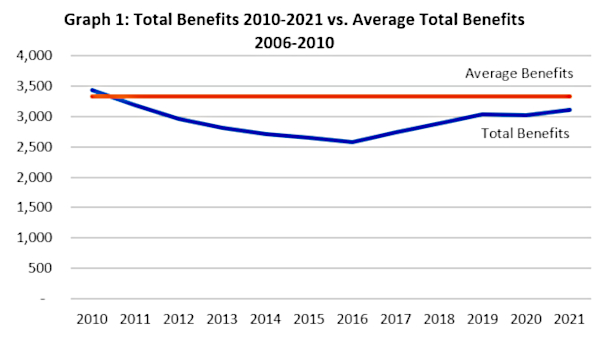Liberals’ COVID-19 Support Measures Reveal Crisis in Canada’s Low-Wage Job Market
Inequality and class disparity have been on full display in the devastating coronavirus outbreak. On the one hand, Canada’s dependence on the work of undervalued and underpaid healthcare workers, cleaners and retail employees has been clearer than ever. On the other, these workers are bearing the brunt of the economic crisis. In March, one-third of workers earning $14 an hour or less became jobless or lost most of their hours of work.

The emergency has also laid bare the limits and contradictions of the low-wage job market. Along with the United States, Canada has one of the highest share of low-paid workers in the OECD. In the name of ‘flexibility’, reforms in the 1990s and 2000s established a labour market in which a succession of McJobs was expected to serve as the primary shock absorber for working-class families. In turn, the role of Employment Insurance (EI) was to underwrite the low-wage economy.
While heartless and unjust, this vision might have been plausible as long as these jobs remained plentiful. When even low-paid service jobs evaporated overnight, the failure of Canada’s income support system, and the urgent need to build something better, became obvious.
False Security
In May 2019, the official jobless rate fell to its lowest level since 1976. In several provinces, workers in low-paid sectors like retail, accommodation and food services benefited from minimum wage increases. To be sure, weak spots were evident; the slide in crude prices pushed unemployment higher in oil-producing provinces, especially for young men. But officials generally puzzled over the failure of the apparently healthy job market to generate faster wage growth.
The reason was that beneath the headline numbers, vulnerability and insecurity were rife. In the sluggish recovery following the Great Recession, large numbers of workers signed up for low-quality, low-paying jobs that offered little assurance against hard times. Low-paid job growth, concentrated in industries like accommodation, food services, retail, and personal services, far outstripped high- and mid-paying jobs. The economy had become reliant on the nearly one-third of workers who could be described as vulnerable workers in precarious employment.
Signs of vulnerability were not difficult to spot. Unions now covered fewer than one in every six private sector workers. Surveys reported as many as half of workers living paycheck to paycheck, and monthly swings in income were common. Half of Canadians had no savings to endure three months of no income. Even in a supposedly booming labour market with low interest rates, personal bankruptcies hit a ten-year high at the end of 2019.
More and more workers, especially the lowest earners, newcomers to Canada, and women, took employment in the gig economy. In 2018, as many as 30 per cent of Canadians reported working a side hustle of at least a few hours a week, especially part-time workers and others looking for a few extra dollars to cope with low earnings. As temporary work increased faster than permanent jobs, multiple jobholding also expanded.
These workers had few workplace benefits and little or no statutory paid sick leave to ride out a public health crisis. In the event of an economic downturn, some workers might be able to liquidate what little savings they had. But unemployment benefits were little help, since they had been systematically redesigned to push workers into low-wage work.
Repurposing Employment Insurance
As Donna Wood recounts, EI went into steep decline beginning in the early 1990s, when Conservative and Liberal governments removed ‘disincentives to work’ and reduced the ‘generosity’ of benefits. Workers quitting their jobs or fired for cause were no longer entitled to benefits. Eligibility criteria were altered from weeks worked to hours worked in a year, effectively doubling the number of hours needed to qualify, and penalizing thousands of women and part-time workers.
Nationally, almost two-thirds of the unemployed were ineligible or not receiving EI for various reasons. Many of these workers regularly paid into the EI program, but could not access benefits when unemployed. For income support in hard times, many looked to casual gigs, temporary work and mini-jobs instead. In the early 1990s, more than four in five unemployed workers qualified for Employment Insurance benefits. By 2020, just one in five unemployed collected EI in Canada’s major urban centres.
When low-paid workers did qualify, EI benefits were inadequate to survive on, as rent, child care fees and other costs shot up. In the mid-1990s, both the EI benefit rate and the maximum number of weeks a worker could collect EI were reduced. The maximum EI benefit was lowered, and then effectively frozen for a decade. Today, the maximum EI benefit is roughly equivalent to what a full-time minimum wage worker would earn in Ontario—but eligible low-wage workers receive much less than the maximum.
Employment Insurance’s meagre benefit limits its attractiveness to higher-income workers, but for lower-paid workers, EI is simply not enough to get by on. Consequently, the government has increasingly allowed EI recipients to take ‘McJobs’ while on claim, both to supplement low EI benefits, and to “help employers recruit workers for part-time or short-term jobs.” During the Harper era, reforms also tightened job search requirements and redefined “suitable employment” to push workers into lower-paying jobs. These changes were designed, as Human Resources Minister Diane Finley put it, to “make sure that the McDonald’s of the world aren’t having to bring in temporary foreign workers to do jobs that Canadians who are on EI have the skills to do.”
EI and the Response to COVID-19
As precarious jobs proliferated in the aftermath of the Great Recession, only a complete overhaul of the EI program could rectify its numerous defects. The Liberal government came to office in 2015 with a promise to review the EI system, but soon binned the idea. The party dropped the commitment altogether in its 2019 re-election campaign, believing that widespread demands to rebuild EI “may be very costly” or “not in line with the program’s role and objectives,” namely, reinforcing the low-wage economy.
Unsurprisingly, restoring EI and preparing for the next recession was not one of the new government’s priorities. As the coronavirus pandemic gathered speed in January and February, the government appeared preoccupied with collapsing oil prices, pipeline protests of Wet’suwet’en supporters, and Teck Resource’s decision to abandon its Frontier mine. Once the pandemic and economic crisis unfolded in earnest, Ottawa rushed to inject liquidity into financial markets and reassure investors. Income support for laid-off workers came later, and much more fitfully.
Improvised Income Support
As Tom Walkom observed, the economic fallout from COVID-19 forced Ottawa to reinvent an unemployment insurance program that actually covers the unemployed.
Ill-equipped to handle the explosion in benefit claims (nearly a million during the week of March 16 alone), the EI system was quickly overwhelmed. Compounding the sheer volume of applications, the mushrooming of eligibility rules and restrictions bogged down claims processing, so that rapidly delivering benefits became impossible.
Faced with the need to drastically simplify and fast-track jobless benefits, Ottawa sidestepped the existing EI program for the unemployed. In its place, the government hurriedly developed a flat-rate, $500 a week benefit administered through the Canada Revenue Agency, in which application processing could be automated, and payments quickly issued to the unemployed.
With no waiting period, the Canada Emergency Response Benefit (CERB) had a straightforward design and simple eligibility requirements: claimants had to have ceased working because of COVID-19, with no income from employment and self-employment.
Overlooked in the process, however, were hundreds of thousands of previously unemployed workers, seasonal workers and EI recipients who had exhausted their claims, but had no way of applying for the new benefit.
Many low-paid workers laid-off because of COVID-19 and qualifying for the benefit would receive a higher CERB benefit than under the EI rules. And on cue, employers complained they would have trouble keeping workers at work. Union leaders warned that unless wages rose, personal support workers and health workers struggling with chronic understaffing, low pay, and life-threatening conditions could hardly be faulted for staying away from work.
But for many workers, the stripped-down CERB benefit proved too low. The ban on additional earnings ignored the fact that workers needed to pick up additional shifts and hours of work just to make ends meet. For precisely this reason, unionized workers had negotiated wage top-ups from employers to supplement the low EI rate. These too were not permitted under the simplified rules.
Finally, there were also vulnerable workers excluded from the benefit altogether. Out of a continuing impulse to distinguish the deserving from the undeserving, the government set a $5,000 earnings threshold to gain access to the new CERB benefit. But in the low-paid gig economy, even the $5,000 earnings needed to be eligible would by one estimate disqualify 175,000 workers.
Emerging from the Rubble of EI
The coronavirus outbreak and economic ‘sudden stop’ playing out in March and April have revealed the limits of a strategy in which low-wage, precarious work is meant to substitute for unemployment insurance benefits. Like no other crisis, the current recession has revealed how short-sighted and unsustainable this 30-year project has been.
In the weeks and months ahead, there will be calls from business and right wing think tanks to reconstruct the low-wage economy in the wake of the pandemic. The left and labour will need to press for an alternative program of decent work and good jobs for all. This must involve direct government job creation programs, a comprehensive agenda for rebuilding public services and supporting a high-wage, high-quality care economy, and a plan to generate green jobs by transforming our economy and bringing down emissions. It must also involve a transformed system of unemployment benefits that serves the unemployed instead of low-wage employers. •
This article first published on the Canadian Dimension website.





